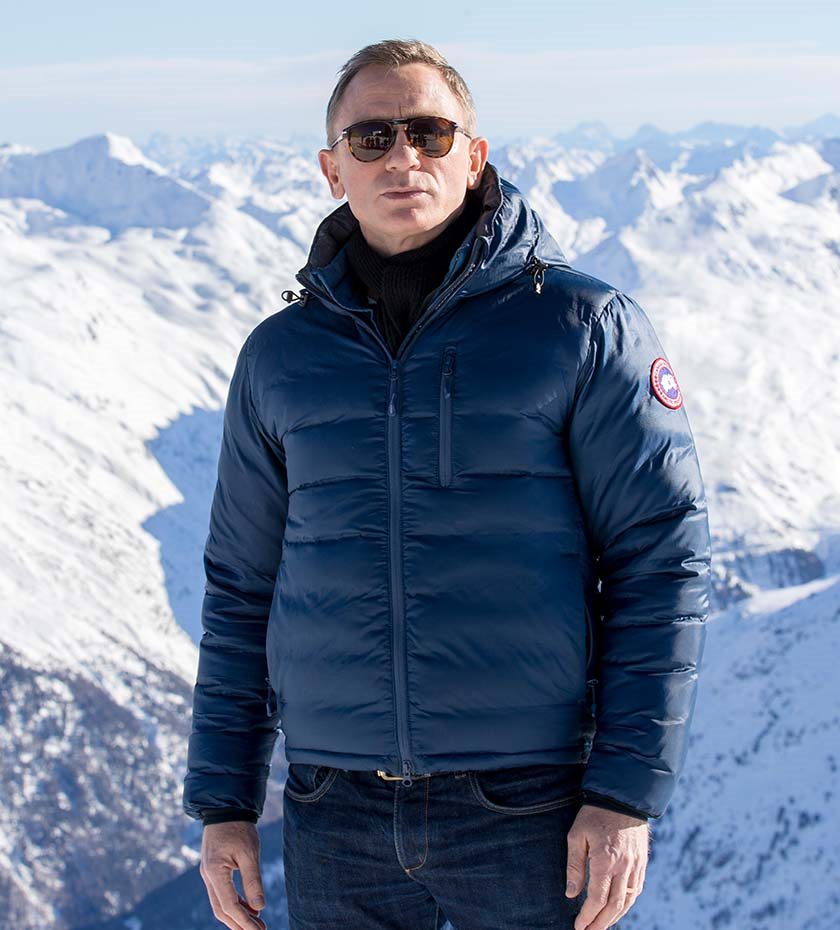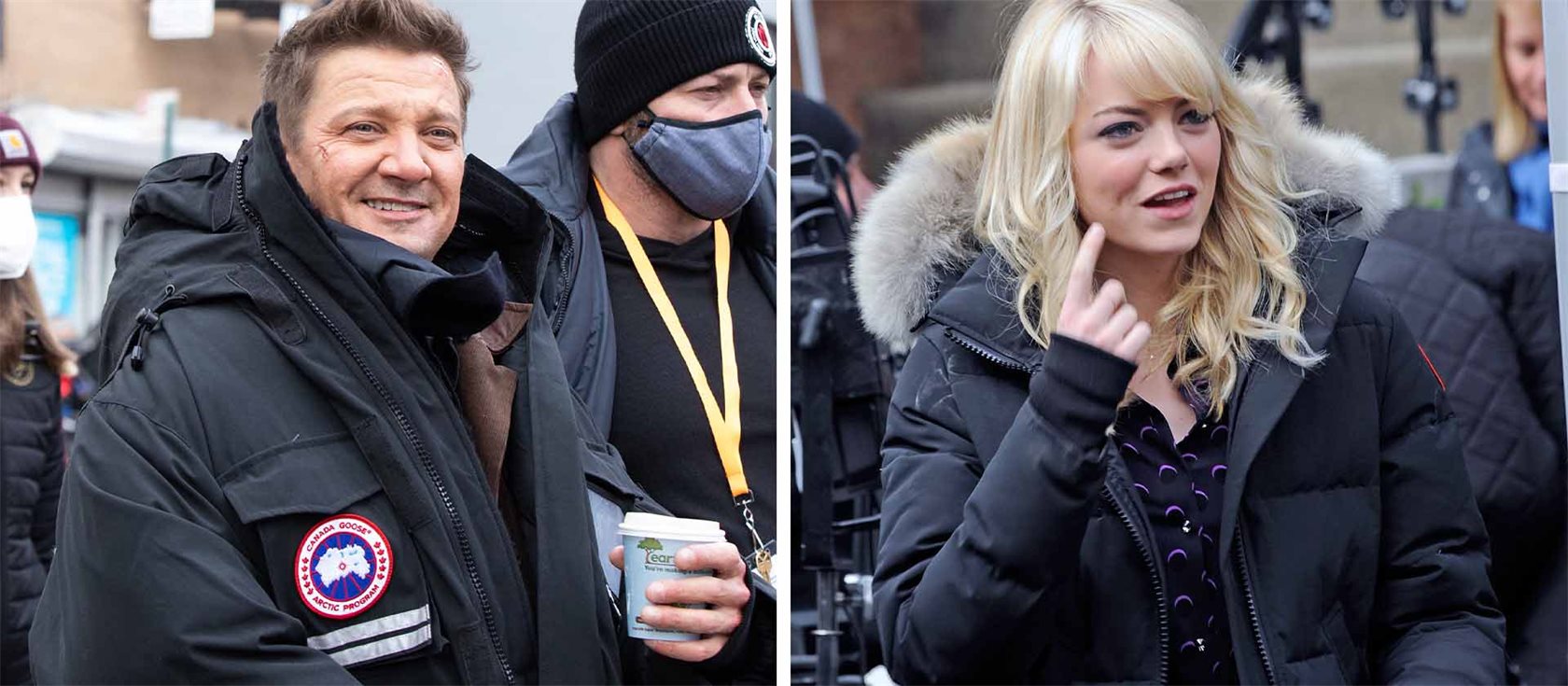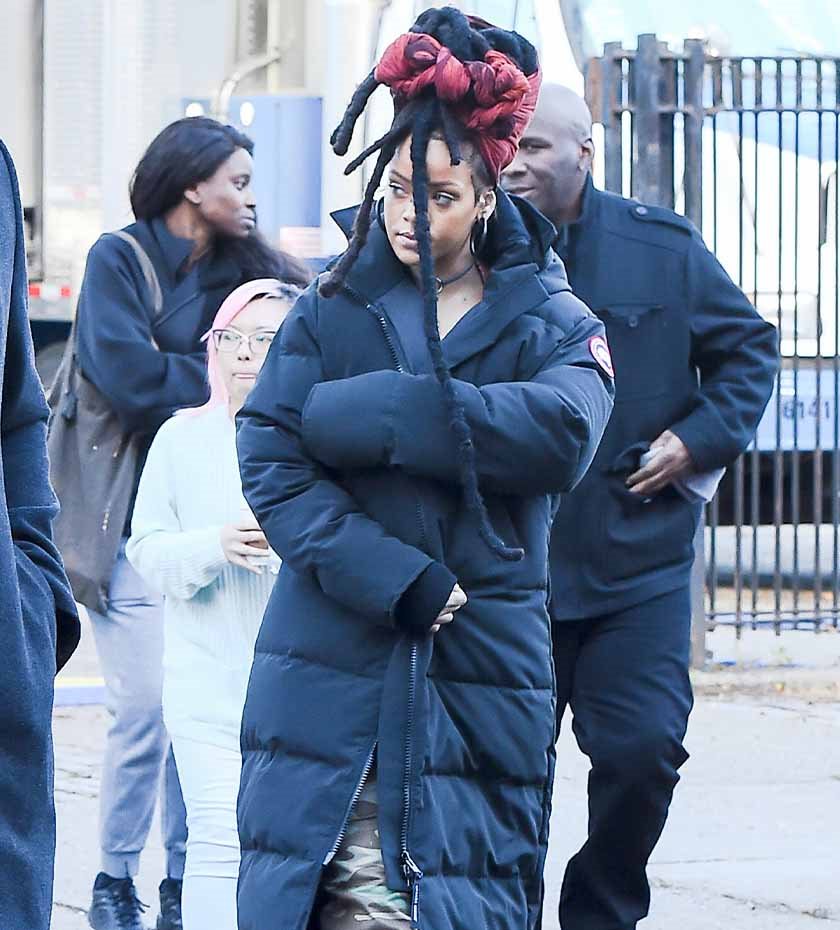CANADA GOOSE - DESIGNED FOR ARTIC COLD

Canada Goose. On a global scale, few clothing brands are better known than Canadian down jackets and parkas. And while future parkas will now be without the famous - and sometimes maligned - fur trim of the hoods, it's still the brand of choice when filmmakers head out into the wilderness of extreme cold and severe weather.
Almost 25 years ago, Canada Goose was asked to help keep the crew on several film productions - especially the directors - warm," says marketing manager Penny Brook, and continues: "We became known for doing serious scene planning and creating warm clothing for the actors as well."
One example is the Canada Goose Mystique Parka, which was designed for Rebecca Romijn in a head-to-toe version to keep her warm between shoots. It went into production and became one of Canada Goose's biggest successes in the following years. In 2017, Rihanna was spotted wearing it while filming Ocean's 8. Canada Goose also honors this angle on its connection to the world of film by sponsoring Toronto's largest LBGTQ+ film festival Inside Out and by supporting a panel of female filmmakers at the Sundance Film Festival in Utah.

“We talk about living in the outdoors and providing protection for people in all environments. But in film, we have the opportunity to think about it from a more psychological perspective and create a more level playing field to be heard and seen. And being involved in the film world is a great way to live out our expression and brand," says Penny Brook.
In fact, Canada Goose has supported somewhere close to 300 film and TV productions across the globe (including Game of Thrones, The Grand Budapest Hotel and Ocean's 8). Which brings us to the brand's long-standing partnership with the Sundance Film Festival (2023 is their eleventh year of collaboration). Canada Goose creates a special edition every year: The highly coveted "Filmmaker Jacket" has achieved cult status. It is created in only 400 copies made especially for filmmakers. Each Filmmaker Jacket reflects the company's priorities and values at the time. In 2017, for example, the HyBridge Perren jacket ushered in an era when Canada Goose began creating other outerwear than parkas.
This year's Filmmaker Jacket is called the Lawson Fleece. A new design line in the brand's Humanature collection, which since its launch in 2020 also serves as a platform that stands for the brand's commitment to creating sustainable solutions and social responsibility.
"The majority of all fleece is made from plastic, leaving lots of microplastics in the environment. We had a great opportunity to use one of our most sustainable products to date," says Penny Brook and continues: "The new fleece is made from 62 percent recycled wool. The rest is other materials such as biodegradable wood-based textile and bio-based polymer. The result is a super soft, breathable fleece that doesn't harm the environment, but also has a long lifespan."

With its Humanature collection, Canada Goose has built on the DNA that was created back in 1950s Toronto when Sam Tick immigrated to Canada and founded Metro Sportswear. Back then, the collection consisted of woolly vests, raincoats and practical coveralls for snowmobiling.
In fact, it wasn't until the 70s that the company name was changed to Canada Goose. This happened when Sam Ticks' son-in-law, David Reiss, took over management and introduced the name Snow Goose. It wasn't until his son, Dani Reiss, took over as CEO that the name Canada Goose was finally established.
It was at this point that the brand really started to take off. Today, few clothing brands can boast a logo as recognizable as the one on the sleeve of a genuine Canada Goose parka. And not least the name itself, which for many is the epitome of quality and high functionality.
Fur-free
Truth be told, there have also been episodes where Canada Goose's image has been slightly scratched. Since the turn of the millennium, not only environmental concerns have played an increasingly important role, but also animal welfare has changed the shopping patterns of many consumers. For many, baby seal fur was the last straw. Besides, Canada Goose parkas’ iconic fur trim has also outraged many consumers and animal welfare organizations. In 2020, this prompted Canada Goose to renounce the use of animal fur in their clothing. All new collections from that year onwards were fur-free. Another step in a more sustainable direction for the Canadian luxury brand.
There is still goose down in jackets and vests. But it's a step in a direction that is appreciated by customers. "50% of our customers are mature people who think about their choices. The quality has to be right and it has to be desirable. Environmental issues and social responsibility are real issues that can determine whether they will buy a product," says Penny Brook.
But Canada Goose also has a strong hold on the younger generation, for whom the environment and animal welfare are even more important. In terms of design, the brand has started a trend where wilderness themes are perhaps being pushed to the background in favor of, for example, floral textiles.
The quality will still be top notch. But the goal is to become 100% plant-based in the future. "Sustainable behavior is not really a choice anymore. And we will continue to provide people with protection against extreme temperatures. Also in the future. In a sustainable way," Penny Brook concludes.